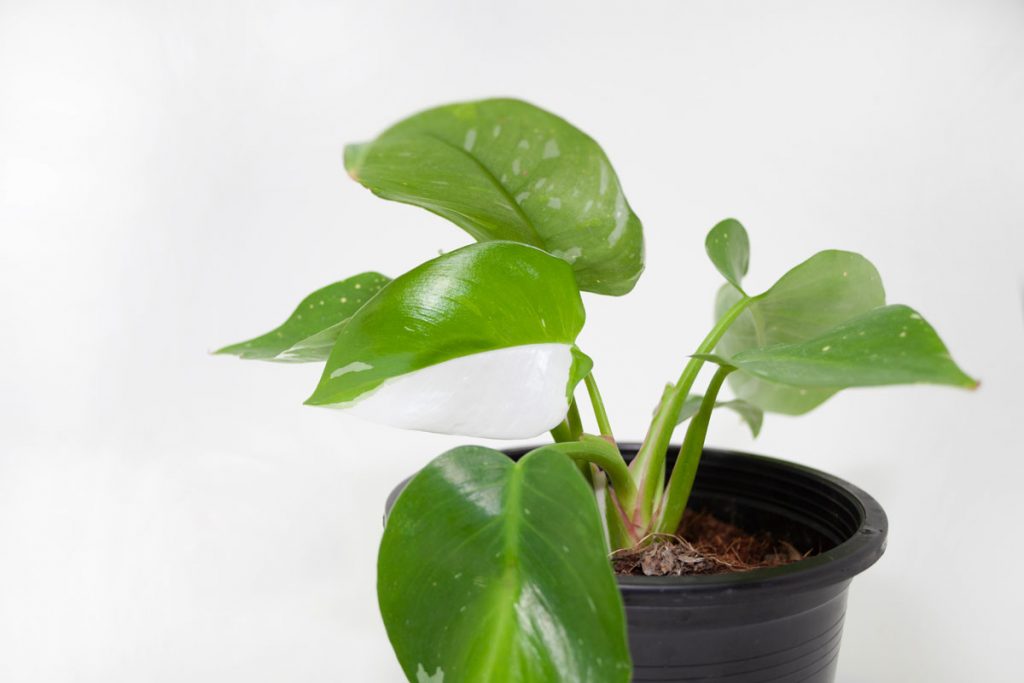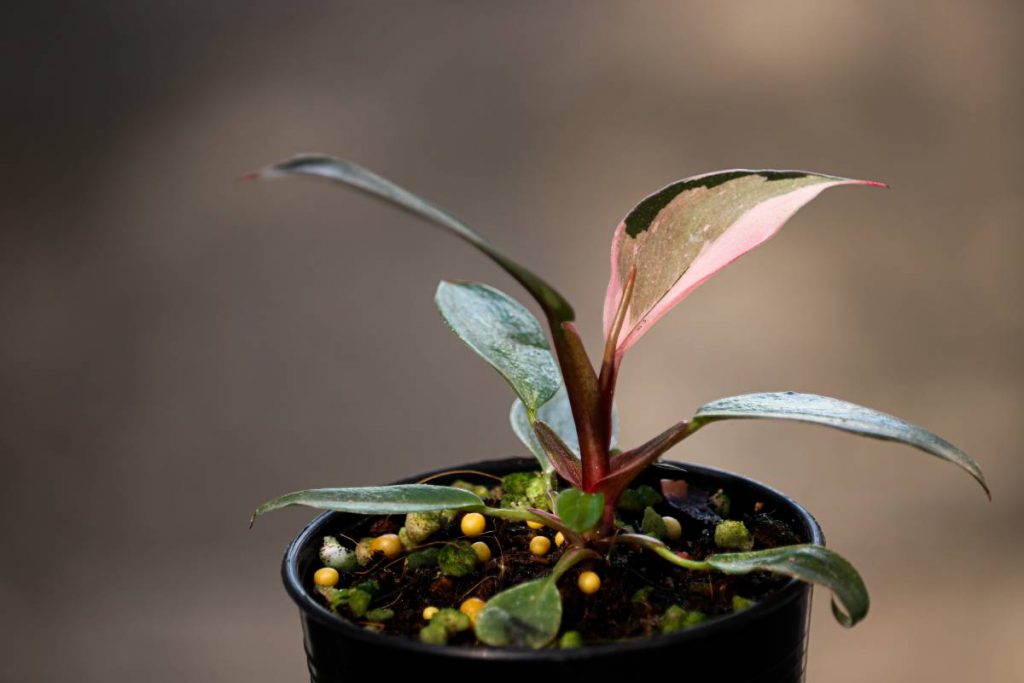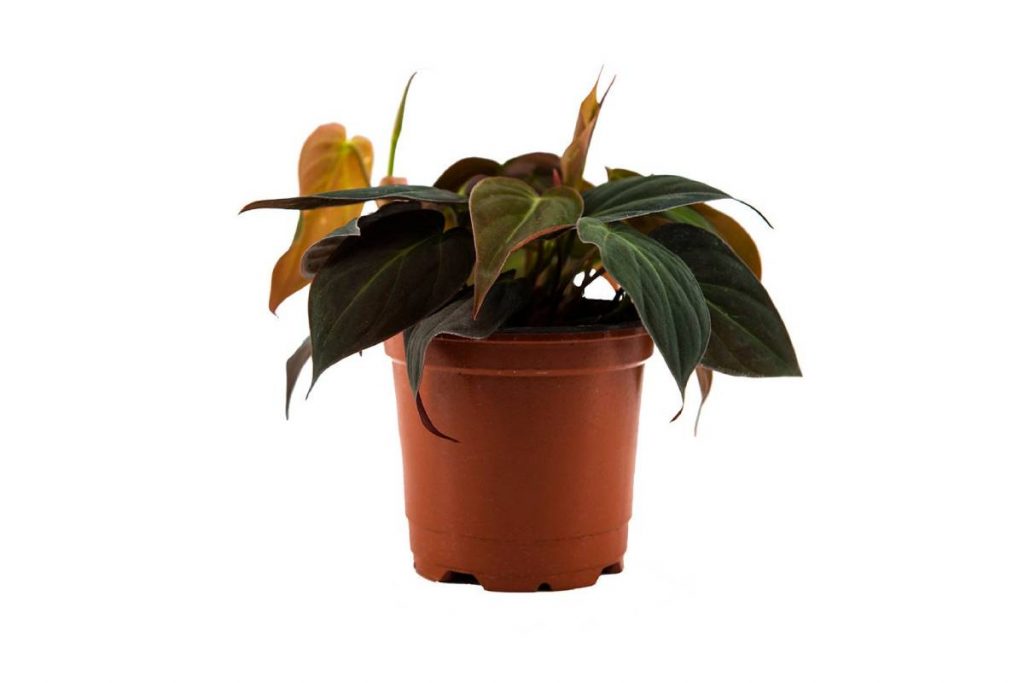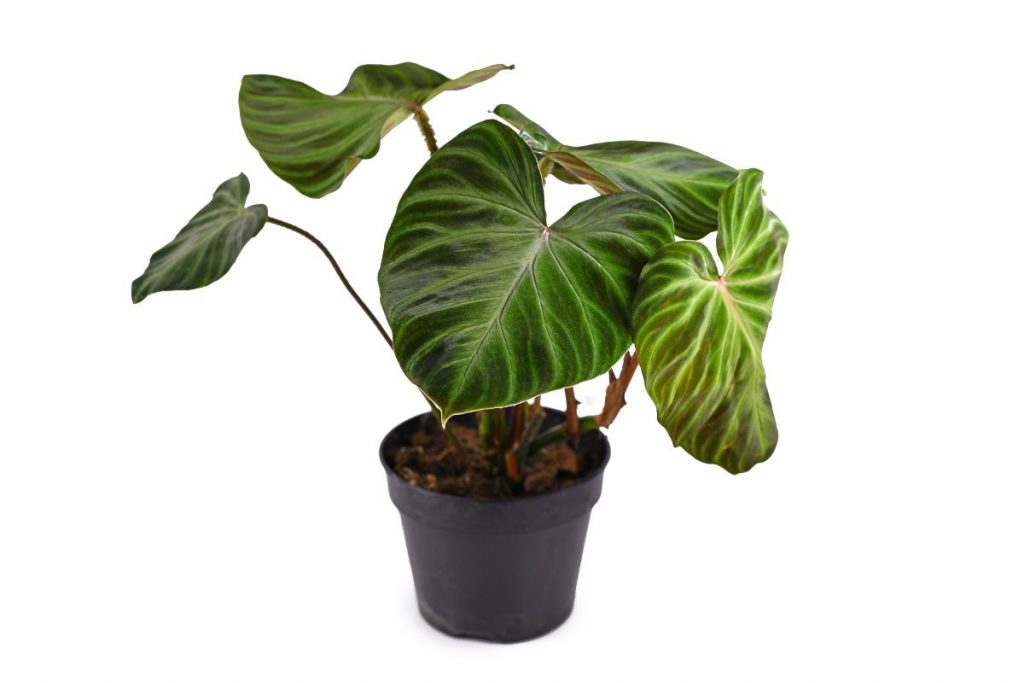Philodendron white princess is a tropical plant with green foliage characterized by white splashes that appear marbled on the leaves. Unlike other philodendrons with heart-shaped leaves, this variety has narrower and pointed leaves and green stems with some red hints.
The plant belongs to the family and species, Araceae and philodendron erubescens, respectively. It is a rare plant native to South America that grows outdoors, but it is also a common houseplant that will make your space look stunning.
The plant’s leaves are spaced very closely to its stem, and you may not see the stem until the plant is much older or until the leaves at the bottom naturally start to shed.
Due to that, a philodendron white princess plant will usually be different and distinct from other philodendrons that are generally vine-like. It also has aerial and underground roots. Its underground roots grow deeply in the soil while the aerial roots absorb nutrients for the plant from the air.
How to Care?
Philodendron white princess is a plant that will thrive excellently indoors or outdoors, provided it is grown in optimal growth conditions. It is not extremely difficult to take care of because its growth needs are also adjustable.
The following are the primary growth conditions needed by the plant for survival;
Light
The philodendron white princess is an aroid that will generally require more light compared to other aroid plants primarily because of its white variegation. For the plant to grow optimally, the best lighting for it should be bright but indirect. Indirect light naturally enhances the plant’s variegation, and it may get completely white leaves.

Note: You should take care not to be deceived by too much variegation since that also indicates that the plant is not making much food as usual. The green parts of the leaves play a role in producing chlorophyll and photosynthesis for plant feeding.
You will need to place your plant in an area that receives indirect light or a location that can filter direct sunlight. Grow lights can also be placed distant from the plant when lighting is not enough.
Bright light encourages foliage variegation, and if the plant is not in enough light, the variegation can be lost or reverted. Choosing an east-facing window will help the plant enjoy the morning sun. During the afternoons, keep the plant in an area with a speckled shade to prevent it from getting leaf burn, especially on the variegated parts.
Water
Watering a philodendron white princess plant needs to be done when the top half of the potting mix is dry. You can touch the soil to feel- entrench a finger into the potting mixture to check how damp or dry the growth medium is.
You should be cautious not to overwater the plant as that can result in root rot. Try to check the plant once a week to see if it needs to be watered. Ideally, you would need to water it at least once within one to two weeks.
The best watering times are morning hours since the plant gets a chance to dry out as the day progresses. If you water it at night, you may put it into bacterial infection and mold risks.
Ensure that the plant’s pot has draining holes to allow excess water to flow out during watering sessions as a root rot prevention measure. A soil meter can be excellent to guide you on the watering needs.
Soil
The plant is not very particular regarding soil needs and can grow in an ordinary houseplant potting mix. A rich organic mix that is moderately acidic (a pH between 5-6-6.6) and relatively neutral (a pH between 6.6-7) will help the plant thrive.
The crucial thing to remember is that the soil you use for the plant needs to be well-draining. The roots of this plant do not favor a soggy potting mix. For the plant to be healthy, it is always best that you try to create a potting mix similar to the one it would be growing in its natural habitat.
Additional to being well-draining, an ideal potting mix would also need to be airy and humid. You can create an excellent potting mix that comprises vermiculite, peat moss, coco coir, sphagnum moss, perlite, and pine bark chips. Adding aquarium charcoal would aid with drainage.
Do not opt for premixed soil as a growth medium. Heavy peat earth is also not good as it is susceptible to getting compressed and suffocating the plant.
Temperature
An ideal growing temperature to facilitate the thriving of a philodendron white princess is 64-77 degrees F (18-35 degrees Celsius). The plant will do well in most homes regarding temperature needs. However, do not allow the plant to get too cold during winter.
Philodendron white princess plants cannot tolerate cold temperatures, which hinder their strength and growth. The plant gets damaged if the temperatures go below 17 degrees Celsius (62 degrees F). Its glossiness and freshness are affected by extremely high or low temperatures.
Humidity
A philodendron white princess requires humidity for water retention and preventing loss through evaporation. The plant will do well in a humidity range between 60-80%, but it can also go up to 85%.
When the plant’s environment has dry air or when the humidity is very low, you can increase humidity using a plant humidifier. You can also place the plant on a humidity pebble tray. These are safe ways.
Misting is a simple way to increase humidity, but the method’s effectiveness also depends on how frequently you mist. With misting, the droplets left on the leaves are also risky as they may become favorable grounds for bacteria to breed, whereby the water remains on the leaves for a very long.
Fertilizing
You can fertilize your philodendron white princess when it’s actively growing- summer and spring. During summer and spring, the plant needs more nutrition for consistent growth.
Feed the plant bi-monthly during these seasons using a well-balanced fertilizer. It helps to use liquid fertilizer because it ensures that the plant receives even coverage and gives the roots enough feed to soak up. During winter, you should fertilize the plant every six to eight weeks.
Powdered and granule fertilizers can work too, but they are slow-release fertilizers. Gauging how much you need can be difficult. What you will need to do is dilute the fertilizer (water it down) and use half of what the manufacturer recommends during the first few fertilizing times. This will be a precaution against giving the plant fertilizer burn.
If the plant has fertilizer burn, it will be evident on the leaves’ white parts. An ideal fertilizer would be one with a 10:10:10 NPK ratio.
Height and Growth Rate
Philodendrons are fast growers depending on their variety or cultivar. However, the white princess variety isn’t very vigorous like most philodendrons and is variegated. It is relatively a slow grower.
A philodendron white princess is a self-heading and not a climbing plant. It will successfully support itself without the need for vining or trailing support. When grown indoors, the plant can grow up to an average height of 3 feet wide and 9 feet tall, but it can also grow past that when it’s in optimal conditions.
The foliage of a philodendron white princess will usually grow upward, forming clustered bushes along its stem and then stay rigid for long periods. The leaves can grow 20-30 cm in length. When the plant grows to maturity, it may be challenging to see its stem.
You can prune your philodendron white princess when it grows to five feet to have it maintain a good medium size.
Flower
A philodendron white princess is mainly non-flowering. But it may reveal blooms in its ideal environment or when you use a phosphorous-rich fertilizer to feed it. If it flowers, it will usually show bracts.
How to Propagate Philodendron White Princess?
The best time for propagation is during early summer or spring. The plant hibernates during winter, and during this period, it utilizes food and energy stored during its growing seasons. That’s why propagation is not ideal until the season ends.

To propagate your philodendron white princess, you will need to make a stem cutting containing one node and one leaf, then put it in a container with water-soaked moss. You will then need to place the cutting in bright but indirect sunlight.
Give it time to grow roots and show growth on the node’s top. This may happen between one to six weeks later, and you may then put the plant in an ideal potting mix.
This propagation method is excellent with a large plant, as a small one may not allow you to obtain a node. Small plants have node growths that are very close to one another. If you are using a smaller plant, the best way is to divide it at the base.
Another propagation method would be to make about a seven-inch stem cutting with the leaf nodes, fill an ideal potting mix in a small container, and then moisten it. After that, you need to remove the bottom leaves and plant the cutting.
Find an environment with indirect sunlight to place the cutting and cover it with a plastic bag to increase humidity. Once there is evident root growth, get rid of the plastic bag and begin to take care of the plant as required.
Philodendron White Princess Repotting
It is always good to repot your philodendron white princess when it seems to have outgrown its pot or become root-bound. Ideally, once a year. The best time to do that is during spring.
An immature white princess philodendron will usually continue to sprout, and it may outgrow the pot it grows in fast. However, if your plant has an excellent mounting development, you don’t have to repot.
When the plant is root-bound, it will have smaller leaves, and some of its roots may be protruding outside the pot’s bottom.
Repotting gives the roots space and provides the plant with fresh soil to access new nutrients. When repotting, you need to transfer your philodendron white princess into a pot that’s a size bigger than the one used initially. However, don’t go for an overly large pot as that will only lead to water, fertilizer, and nutrients wastage, leading to stunted growth. The plant only absorbs what it requires.
Additionally, avoid excessively messing around with the plant’s roots because it can lead to shock. The best way is to moderately shake the plant’s root ball to remove excess soil and freshly plant it.

Is Philodendron White Princess Poisonous?
Yes. The plant’s sap has calcium oxalate compounds making it toxic when ingested by living creatures. It is harmful to humans and pets like cats and dogs.
If you ingest these crystals, you can get gastrointestinal issues, diarrhea, throat irritations, breathlessness, nausea, and vomiting. Same as with pets. In the event of skin contact, allergies and skin irritation may result.
Medical attention should be sought once the plant is ingested or gets into contact with animals. Be cautious and wear gloves when handling the plant to prevent such incidents and place it in spots pets can’t reach.
Pests and Diseases
Your philodendron white princess plant may be susceptible to bugs like mealy bugs, aphids, and spider mites. You may easily see mealybugs and aphids, but spider mites may be more challenging to spot, especially on the plant’s reddish petioles.
Mealybugs appear as white nests on the stems and leaves, and they suck the fluid in these parts, resulting in yellowing and drying. Aphids are more evident on new leaves, and they leave a sugary and sticky substance on the surface. Spider mites appear as silk webs on the leaves.
The pests may grow out of control, and if you have other plants, they may spread. You can get rid of them by spraying the plant with horticultural oil to avoid infestation. Diluted neem oil pesticide solution will work.
If the plant is growing among other plants, you may need to quarantine it to prevent the pests from spreading.
Continuous overwatering will cause the plant to suffer from chlorosis and root rot.
Compared to Other Plants
Often, the philodendron white princess plant may be confused with other philodendrons. This is because there are philodendron varieties with similar white appearances or characteristics.
Philodendron White Princess vs. White Knight
Philodendron white princess may appear similar to the white knight philodendron from outside. However, there is a distinct difference between these two plants regarding stem coloration.
When you look at the white knight, it displays a darkish pink stem that also appears purple. A philodendron white princess plant will have a green stem that may have a whitish and reddish hint.
The leaves of a philodendron white princess are narrow and appear pointed at the tip, while those of a white knight is curved and rounder. A white knight is a climber, while a philodendron white princess is self-heading.
Philodendron White Princess vs. Pink Princess
As the names suggest, a philodendron white princess plant has green foliage with white parts, while a philodendron pink princess has green foliage with pink details or patterns. A reverted pink princess turns dark green and not white.
When it comes to size, a philodendron white princess is smaller compared to a pink princess. A pink princess philodendron may climb and grow to be much bigger.
Philodendron White Princess vs. White Wizard
The main difference between a philodendron white princess and a white wizard is their sizes. The former philodendron is self-heading, meaning that it is typically small, appears to be bushier, and relatively more compact. The latter philodendron is, however, a climber and not self-heading. It is much bigger with bigger stems and rounder leaves.
The white shade of a white wizard will typically appear brighter than that of a white princess, and the color may be evident on the stems as well. The stems of a white wizard are green and will not have a hint of red or white as with the white princess.
Common Problems
Leaves Turning Yellow
When you see that your plant’s leaves are turning yellow, it is mainly an issue of unfavorable lighting. Direct lighting and excessive sunlight exposure will usually be the main culprits for making a philodendron white princess plant leaves yellow.
Yellow leaves may also mean that the plant is growing under too much shade. If you overfertilize the plant, it can also get yellow leaves. Nitrogen and nutrient-deficient soil can also make the leaves turn yellow.
The step to take is to adjust these requirements accordingly. You should cut off leaves that have turned yellow but have not recovered even after adjusted conditions.
Leaves Turning Brown
If your plant’s leaves begin to turn brown, that would indicate that you are underwatering, overwatering, or the plant is growing in low humidity. Brown leaf tips can also be due to leaf burn. Therefore, regulate the plant’s required growth requirements in this scenario.



